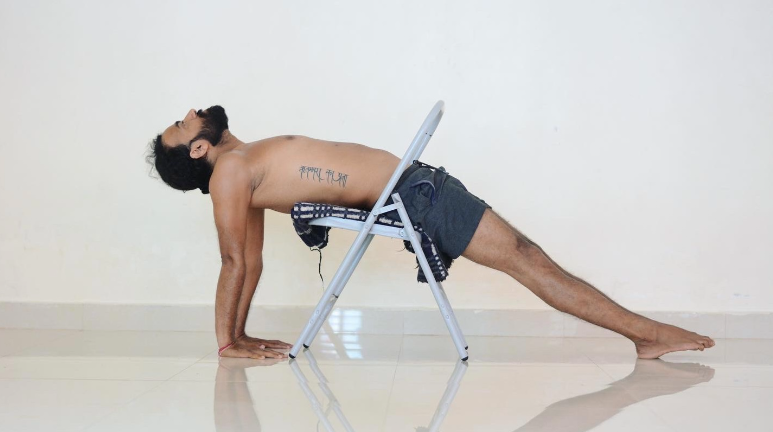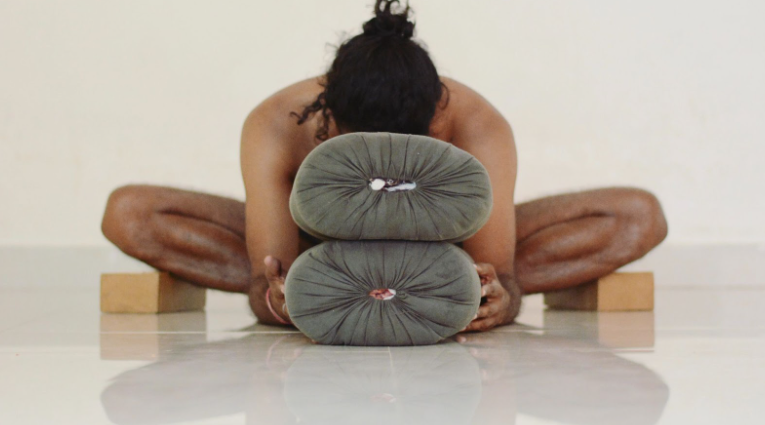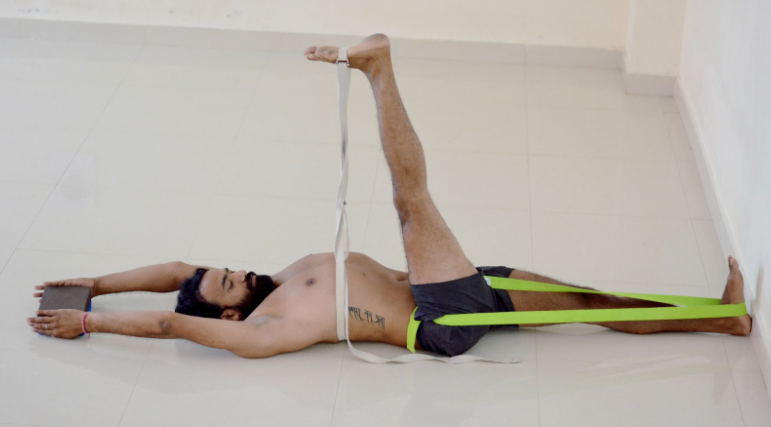What is the origin of Iyengar Yoga?
“Yoga is like music; the rhythm of the body, the melody of the mind, and the harmony of the soul create the symphony of life,” says BKS Iyengar in his best-selling book on yoga, Light on Life.
Iyengar yoga was created by Yogacharya BKS Iyengar around 75 years ago. After a lifetime of dedicated learning of the yoga practices under his guru, Iyengar developed his own form of Yoga. It was based on the eight-limb yoga practiced by the ancient sage Patanjali, 2500 years ago.
BKS Iyengar learned yoga from the great yoga guru, Tirumalai Krishnamacharya, at classes conducted in the Mysore Palace. Pattabi Jois was also a student there.
So it can be said that both Iyengar Yoga and Ashtanga Vinyasa Yoga are branches of one yoga lineage and share many features.
Iyengar yoga teaches yoga postures or asanas with an emphasis on detail, precision, and alignment.
Mr. Iyengar believes that yoga goes beyond its mere physical aspect. It is an art and a science, with its own philosophy.
Iyengar Yoga became an institution in 1975, with the creation of Ramamani Iyengar Memorial Yoga Institute in Pune, named after his wife. Later on this paved the way for the establishment of many other Iyengar Yoga Institutes abroad, across the USA and UK.

What makes Iyengar Yoga unique?
Some of the aspects of Iyengar yoga that make it unique are:
- • Props: Iyengar makes use of props such as belts, blankets, or blocks to help in performing the asanas. These props are especially useful for yoga beginners, elderly practitioners, and those with physical disabilities and limitations. Using props minimizes the risk of injury and strain for these people.
- • Proper alignment of the body during different yoga postures is stressed. To facilitate these, props are used. It is believed that proper alignment of body parts in an intended pose, helps to balance the mind, body, and breath.
- • Sequencing the postures is considered an important aspect of Iyengar yoga. Proper order of conducting different postures or asanas makes it a safe and structured practice. This helps to balance the physical and emotional body.
- • Timing: In this practice, yoga poses are held for longer periods of time. First, the stability in the asana is achieved, and then the depth of the posture is safely intensified. Due to this, the awareness between body and mind is developed along with strength, stamina, and flexibility.
BKS Iyengar recognized that each body is different, and everyone has different strengths and weaknesses. The use of props ensures proper alignment of body in adanas and it’s also a safe and harmonious practice.

What are the benefits of Iyengar yoga?
Iyengar yoga is considered to be a more traditional form of yoga and has immense benefits for both the mind and the body. BKS Iyengar himself started practicing yoga because he was a weak and sickly child. Through his daily practice of yoga, he found his strength and health improving. With his vast knowledge of human anatomy, he developed a therapeutic approach to yoga. Some of the benefits of Iyengar yoga are:
- • Increases flexibility: Being slow and gentle in nature, Iyengar yoga is at the same time a demanding one. The practitioner is guided into stretches that are held for one minute. Any bodily injury is prevented by the use of props, that help to hold the postures.
- • Tones muscles: Iyengar yoga stretches are sustained stretches, and they cover all the muscles of the body. The result is a toned body. Thus, in addition to the main muscles of the body, it works on the connecting muscles too. It offers a full-body workout and also enhances one’s awareness of the inner workings of the body. The physical effort of holding a stretch build stamina of both the body and the mind.
- • Calms the mind: in this form of yoga, you have to sustain the pose for a period of time, and for that, you have to keep your mind focused on the present. This helps you to get rid of negative thoughts and focus on the precise alignment of your body. The more you practice the calmer your mind becomes.
- • Pain relief: The practice of iyengar yoga has been known to give relief from neck and back pain. When you focus on the correct alignment of the body, the slouching and hunching of the muscles are done away with. These are the main cause of back pain. The gentle stretches done with the help of props help to ease the pain-causing tension.
- • Better posture: Iyengar yoga helps to increase the strength of those muscles which are responsible for good posture, like the legs, back, and the core group of muscles. Due to its emphasis on proper alignment, the often ignore smaller muscles get a good workout too. Standing straighter and sitting taller will improve your confidence and energy levels.
- • Helps build immunity: Iyengar yoga works on improving the functioning of the whole body. It works on the circulatory, nervous, and lymphatic systems and also the digestive system. Once all the systems of the body are working in their top form, organs find proper nourishment, toxins are eliminated, and diseases are kept at bay.
- • Improves breathing: We hold our breath whenever we are under stress; this has a bad effect on our body. Iyengar yoga encourages a constant flow of breath. This flow is essential for our optimum well-being.
Training of Yoga teachers in Iyengar style:
In order to get an introductory certificate, yoga teachers have to complete a basic course of at least two years. They have to further complete their training spanning nearly a decade with intermediate and senior levels of certification.
The new system will require a minimum six years of training before assessment.
Due to the rapid spread of Iyengar yoga in the west, there are many who aspire to study yoga.
Those who do, can study yoga at Ramamani Iyengar Memorial Institute in Pune after they have completed eight years of practice.
Iyengar Yoga is unique because it has a global, standardized medium of instruction.

Conclusion:
Iyengar yoga is all about learning, experiencing, and integrating yoga into our daily lives. This powerful and sophisticated discipline is suitable for everyone, beginners, advanced practitioners, seniors, as well as people with disabilities.
It has far reaching benefits and helps a practitioner in all aspects of their existence.
Interested in becoming a yoga teacher?
Newsletter
Upcoming events and latest blogs